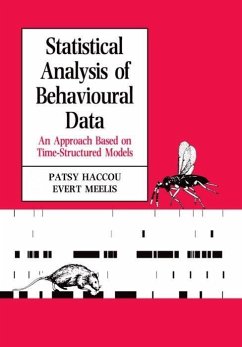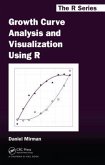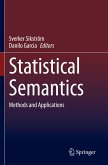Presenting sophisticated statistical methods for analysing continuous-time records of behaviour, this book integrates recent developments in ethology, mathematical modelling, statistics, and technology. With numerous worked examples, the book leads the reader through the mathematical processes and their applications. The book will be incomparably useful to students and researchers in all areas of behavioural science. The authors show how to analyse behavioural data starting with a basic model, the continuous-time Markov chain. They then indicate how and when this model can be generalized and demonstrate the suitability of their approach for detecting, for example, the effects of different experimental treatments or of changes in the social or physical environment. Competitive interactions such as predator-prey or host-parasite are also good subjects for this type of analysis.
This is a how-and-why-to-do-it book for students and scientists in all the behavioral sciences. It presents sophisticated statistical methods for analyzing continuous-time records of behavior, and integrates many recent developments in ethology, mathematical modelling, statistics, and technology. These new methods are explicitly designed to handle sequential or simultaneous acts where neither the duration nor the sequence of the acts is predetermined, which is often the case if the time scale on which behavior is studied is relatively short. The authors show how to analyze behavioral data starting with a basic model, the continuous time Markov chain. They then indicate how and when this model can be generalized and demonstrate the suitability of their approach for detecting, for example, the effects of different experimental treatments or of gradual changes in the social or physical environment. Competitive interactions such as predator-prey or host-parasite are also good subjects for this type of analysis. There are eight chapters and many worked examples, leading the reader through the mathematical processes and their applications. Students and researchers in all fields of behavioural science will find this book incomparably useful for planning and performing data analysis.
Hinweis: Dieser Artikel kann nur an eine deutsche Lieferadresse ausgeliefert werden.
This is a how-and-why-to-do-it book for students and scientists in all the behavioral sciences. It presents sophisticated statistical methods for analyzing continuous-time records of behavior, and integrates many recent developments in ethology, mathematical modelling, statistics, and technology. These new methods are explicitly designed to handle sequential or simultaneous acts where neither the duration nor the sequence of the acts is predetermined, which is often the case if the time scale on which behavior is studied is relatively short. The authors show how to analyze behavioral data starting with a basic model, the continuous time Markov chain. They then indicate how and when this model can be generalized and demonstrate the suitability of their approach for detecting, for example, the effects of different experimental treatments or of gradual changes in the social or physical environment. Competitive interactions such as predator-prey or host-parasite are also good subjects for this type of analysis. There are eight chapters and many worked examples, leading the reader through the mathematical processes and their applications. Students and researchers in all fields of behavioural science will find this book incomparably useful for planning and performing data analysis.
Hinweis: Dieser Artikel kann nur an eine deutsche Lieferadresse ausgeliefert werden.








